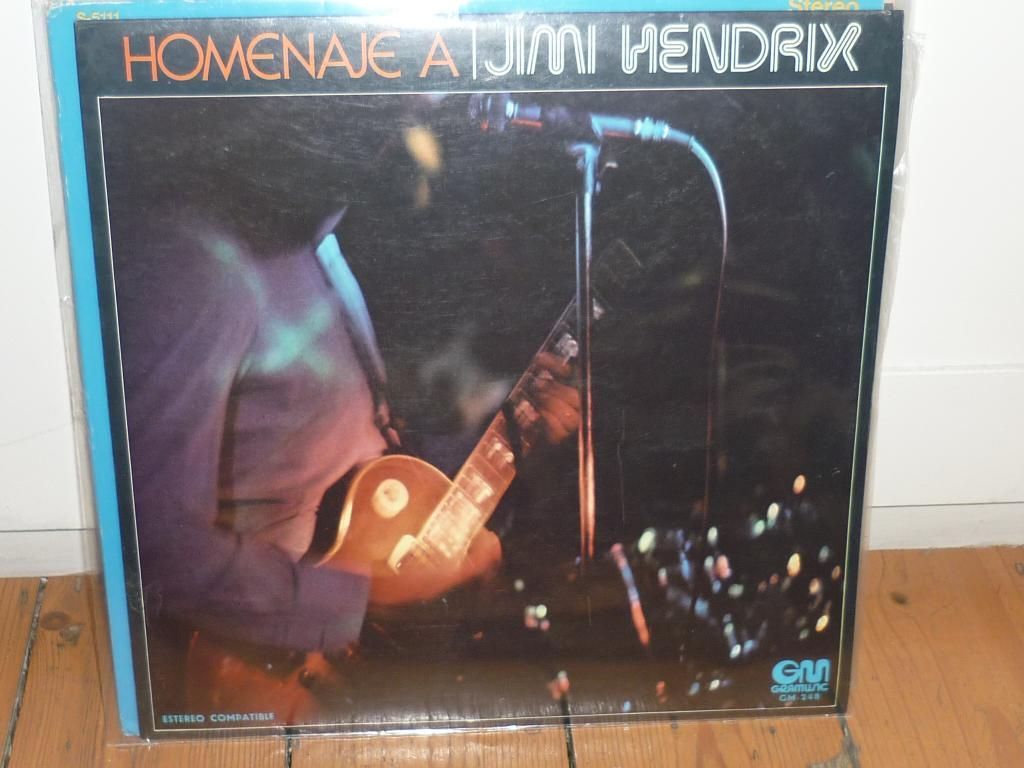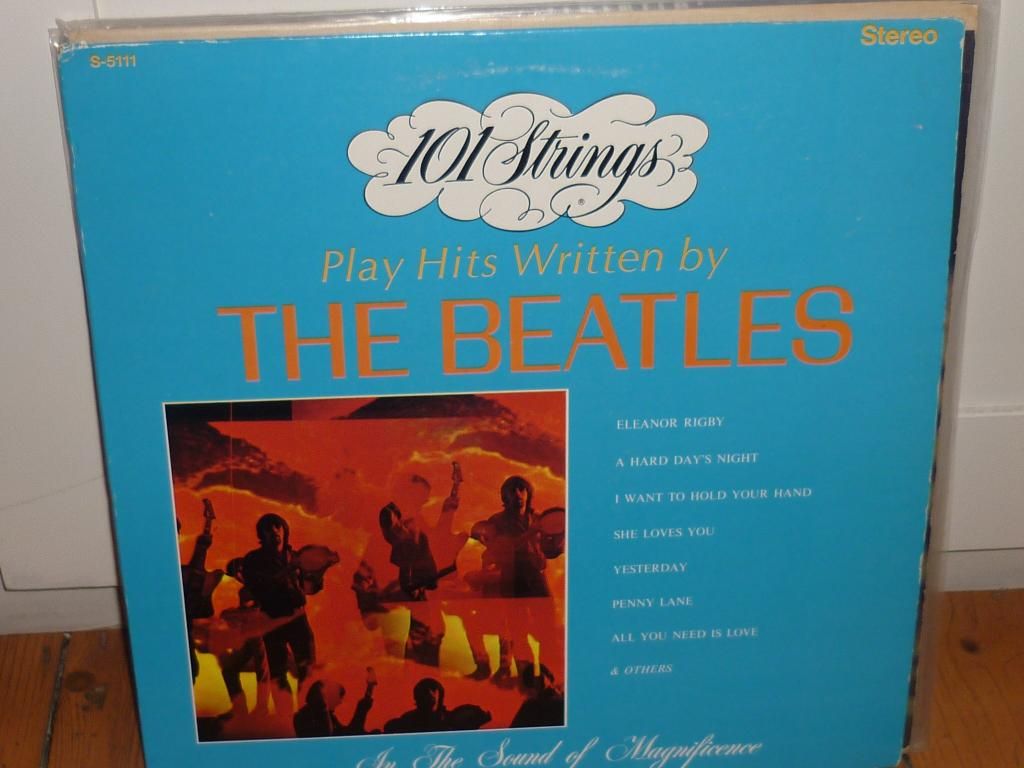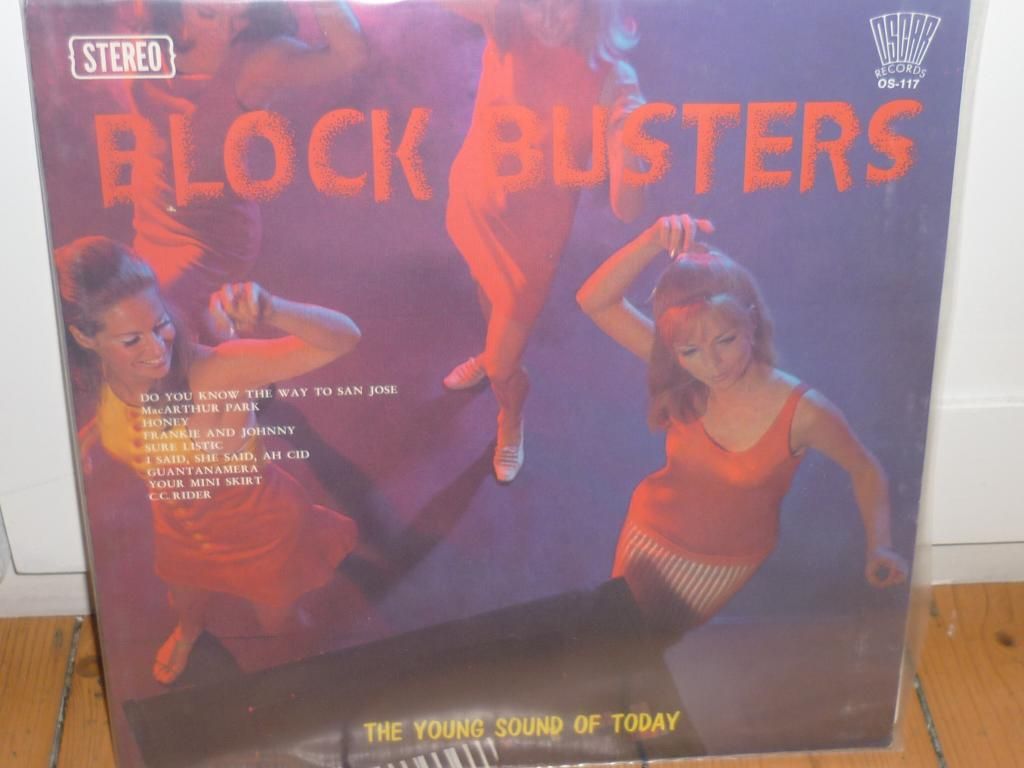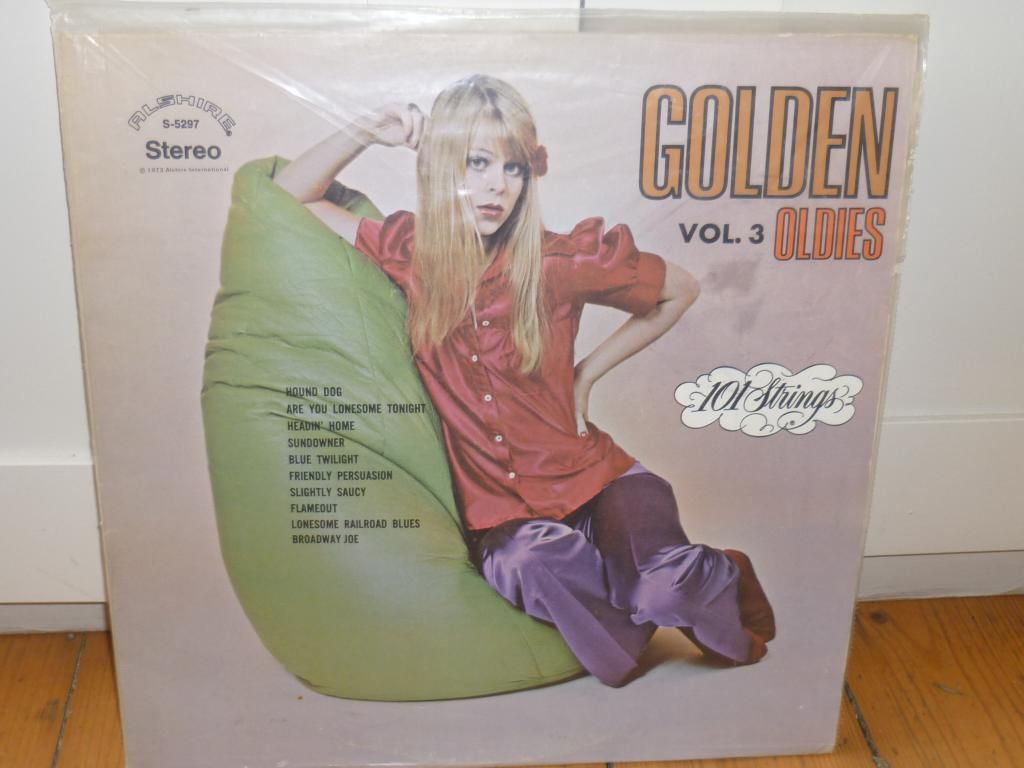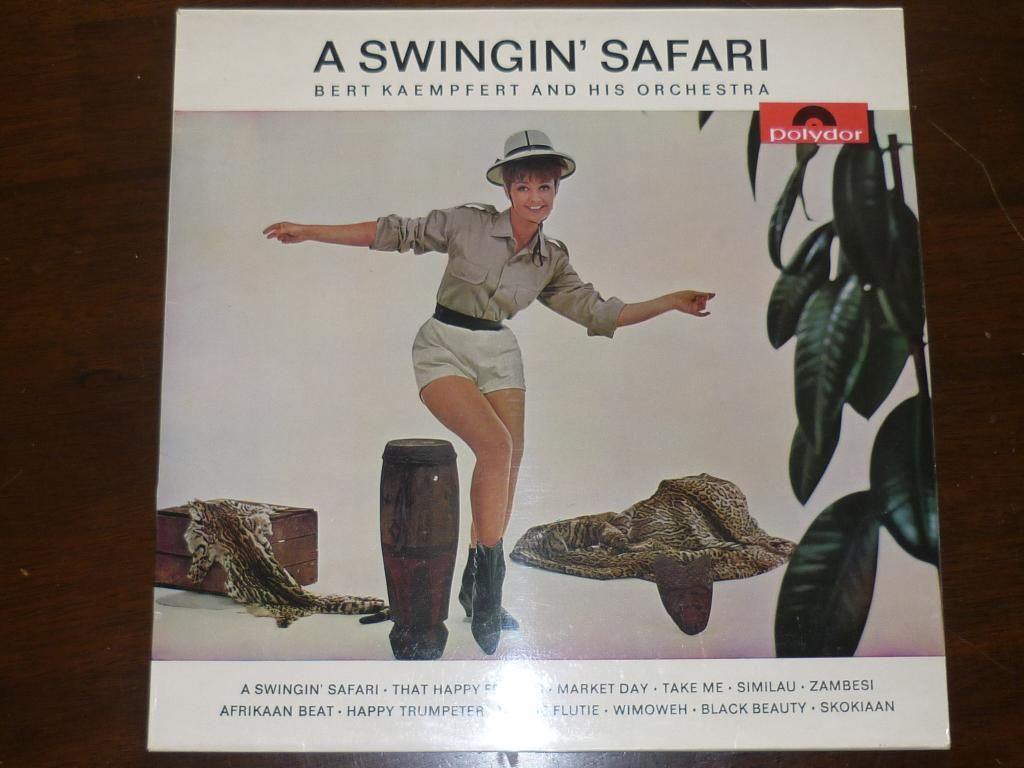I must say I'd thought I'd come to the end of the line with the whole 60s exploito thing. I mean could I scrape the barrel any more?
The answer, of course, is yes, I could.
Over the last few months I've spotted some more records from the same stable as some of the ones I've already mentioned.
First up is this beauty. It just goes to show how in thrall I am to these kind of records that I got really excited by finding a Spanish issue of the Black Diamond's Hendrix tribute record. Which of course is nothing more than a repackaging of the Animated Egg record. How many copies of this in different versions do I now own??
Read about some other Hendrixploitation records here and here
Another find that got me hot under the collar was the 101 Strings Play Hits Written By the Beatles. The image on the front is from a California Poppy Pickers LP and lurking towards the end of side two is Blues For the Guru - a sitar type thing written by Mike Kelly that also appears on their Sounds of Today LP and Love is Blue - here and here
But, by far and away the most exciting find has been this one. On the even-more-budget-than-Alshire label Oscar, Block Busters by the Young Sound of Today, this is manna from heaven for an exploito addict like myself.
Recognise the girls on the front? Of course you do, they first appeared on the Mustang's Organ Freakout (you can see his organ in the foreground - phoar) before making another appearance on the Haircuts and the Impossibles - here and here
And as for the music....
Basically this record is a reissue of the Young Sound of 68 record put out by Somerset clicky
Everything on it appears on other releases as well. There are two Animated Egg tracks, one by Donnie Burks, one by The Mustang, one by Little Joe Curtis and four by the Strings for Young Lovers/ 101 Strings. I could go on and on about where they all appeared (for instance the MacArthur Park appears with vocals on the Stone Canyon Rock Group LP). If you really want to know, go through some of my old posts and join the dots.
Here we have Golden Oldies Vol. 3 by the 101 Strings. Surely none of the Animated Egg tracks could be described as a Golden Oldie? I know that the record originally came out in 1968 and this record was released in 1973 (on Alshire International in Canda no less!), but not even DL Miller could call it a Golden Oldie?
But guess what? On side B we have Flameout from the Astro Sounds Beyond the Year 2000 LP. Amazing cheek I call it!
I quite like their take on Hound Dog, so if you see this, pick it up!
No doubt there are even more out there. If anyone wants to point me in the right direct I'd be very grateful.
The answer, of course, is yes, I could.
Over the last few months I've spotted some more records from the same stable as some of the ones I've already mentioned.
First up is this beauty. It just goes to show how in thrall I am to these kind of records that I got really excited by finding a Spanish issue of the Black Diamond's Hendrix tribute record. Which of course is nothing more than a repackaging of the Animated Egg record. How many copies of this in different versions do I now own??
Read about some other Hendrixploitation records here and here
But, by far and away the most exciting find has been this one. On the even-more-budget-than-Alshire label Oscar, Block Busters by the Young Sound of Today, this is manna from heaven for an exploito addict like myself.
Recognise the girls on the front? Of course you do, they first appeared on the Mustang's Organ Freakout (you can see his organ in the foreground - phoar) before making another appearance on the Haircuts and the Impossibles - here and here
And as for the music....
Basically this record is a reissue of the Young Sound of 68 record put out by Somerset clicky
Everything on it appears on other releases as well. There are two Animated Egg tracks, one by Donnie Burks, one by The Mustang, one by Little Joe Curtis and four by the Strings for Young Lovers/ 101 Strings. I could go on and on about where they all appeared (for instance the MacArthur Park appears with vocals on the Stone Canyon Rock Group LP). If you really want to know, go through some of my old posts and join the dots.
Here we have Golden Oldies Vol. 3 by the 101 Strings. Surely none of the Animated Egg tracks could be described as a Golden Oldie? I know that the record originally came out in 1968 and this record was released in 1973 (on Alshire International in Canda no less!), but not even DL Miller could call it a Golden Oldie?
But guess what? On side B we have Flameout from the Astro Sounds Beyond the Year 2000 LP. Amazing cheek I call it!
I quite like their take on Hound Dog, so if you see this, pick it up!
No doubt there are even more out there. If anyone wants to point me in the right direct I'd be very grateful.
